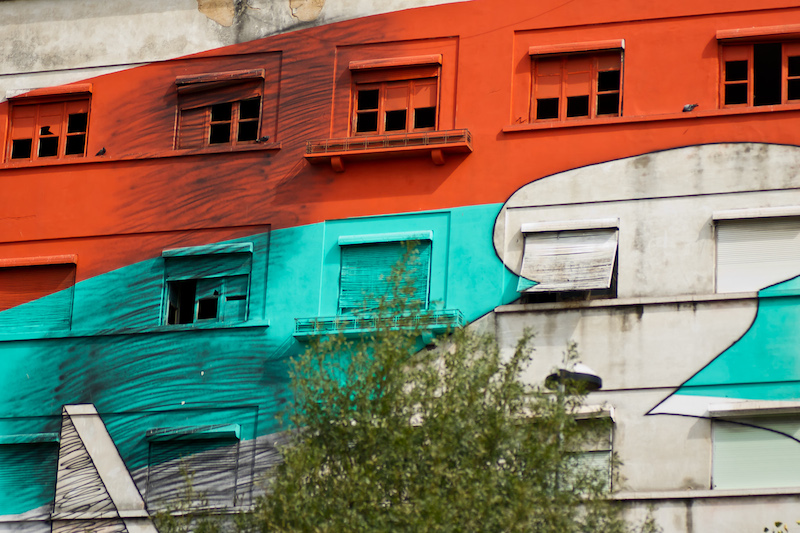
Detail of a mural by MOMO. Photo by r2hox.
There are of course a lot of street artists whose work has a grounding in conceptual art, but until recently many of those artists’ were producing work that balanced conceptual elements with aesthetics. For example, Shepard Fairey’s OBEY Giant campaign is a massive ongoing conceptual artwork, but many individual components of the campaign involve good design and aesthetically pleasing or at least eye-catching imagery. In 2011, Carolina A. Miranda wrote a story for ARTnews about the growing popularity of abstract and/or conceptual street art, but she doesn’t attribute those trends to the internet. With regard to artists like Ron English and Fairey who mix conceptual art and pop art, the internet has been nice, but it hasn’t been essential to their success. On the other hand, artists like Brad Downey who do conceptual street interventions or MOMO who paint abstract work rather than figurative pop icons seen in so much traditional street art seem to have been helped along greatly by the internet, and have also had the chance to influence the work of many more artists than they would have been able to without the web. Although Miranda doesn’t say so, I think the trend that she picked up on can be attributed, at least in part, to the internet.